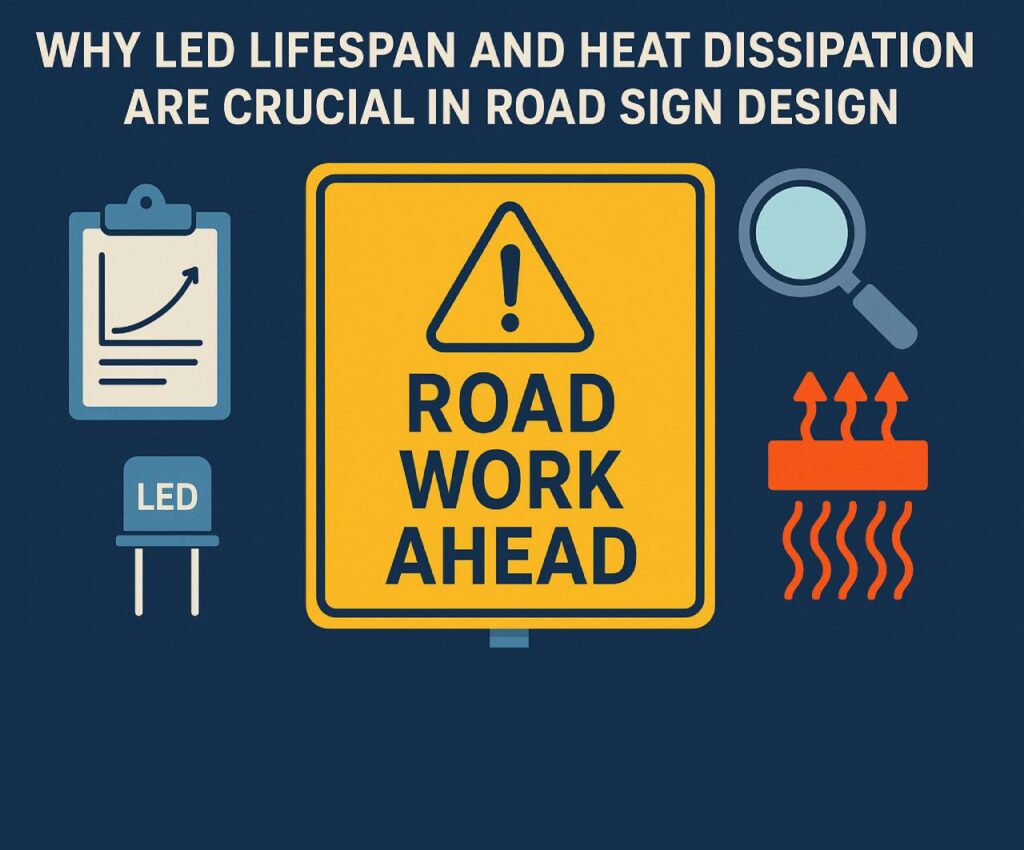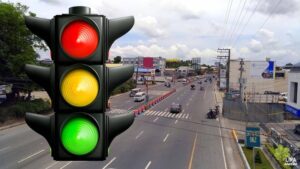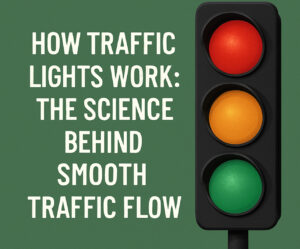LED technology has transformed everything from home décor to city infrastructure. Whether it’s a led custom name sign on a shopfront, custom made led signs for wayfinding, or a personalized led name sign on a delivery vehicle, LEDs have become the standard. But in the world of road signage, there’s more at stake than aesthetics or branding. The lifespan and heat dissipation of these LED components are make-or-break features when it comes to safety, durability, and cost efficiency.
From extreme weather to 24/7 operation, road signs take a beating. That’s why designers and municipalities must prioritize high-performance LEDs that last longer and run cooler. Unlike decorative signs like a led custom name sign, road signs are not optional—they’re essential tools for saving lives. Know more.
Why LEDs Rule the Road Sign Industry
Traditional bulbs once lit road signs, but their energy consumption and short lifespan made them unsustainable. LEDs changed the game. They’re brighter, more energy-efficient, and last far longer. That’s why both small businesses and large-scale governments have switched to LED signage—whether for a custom made led sign on a café or an overhead speed limit board on a highway.
But not all LEDs are created equal.
The same technology used in a personalized led name sign may not be sufficient for outdoor traffic signs unless it’s designed for thermal management and longevity. Road environments introduce complexities that home or shop installations don’t face: vibration, moisture, heat cycles, UV exposure, and electrical surges.
LED Lifespan: Why It’s More Than Just a Number
An LED’s rated lifespan might say 50,000 hours—but what does that mean on a busy expressway in 40°C heat? Or under constant monsoon rains? In practical terms, lifespan is affected by:
- Heat buildup inside the enclosure
- Dust and environmental contamination
- Power surges or inconsistent supply
- Quality of soldering and electrical contacts
Whereas a led custom name sign might run a few hours a day indoors, road signs operate all day, every day, in harsh conditions. If an LED fails in a personalized led name sign, it’s a cosmetic issue. But if it fails in a traffic warning board or lane control panel, it can lead to accidents or traffic chaos.
That’s why road sign designers can’t afford to gamble on lifespan. LEDs used must be industrial-grade, with verifiable performance in real-world testing, not just lab specs.
The Hidden Enemy: Heat Buildup
Heat is the silent killer of LED signs. The longer an LED runs, the more heat it generates. If that heat has nowhere to go, it begins to degrade the internal components, reducing brightness, shifting color, and eventually causing total failure.
This is where many custom made led signs fail when repurposed for outdoor or industrial use. They might look fine in controlled environments, but when used in sealed casings under direct sunlight, the heat becomes a problem fast.
For road signage, effective heat dissipation is essential. This means:
- Aluminum backplates for thermal conduction
- Vented housings to allow air flow
- Heat sinks and cooling fins
- Smart control systems that dim lights during off-peak hours
The lesson? A led custom name sign made for retail won’t survive on a motorway pole unless it’s been engineered for the job.
Maintenance Costs and Downtime
In business, a broken personalized led name sign might affect branding or ambiance. In infrastructure, a faulty road sign causes real costs—dispatching technicians, renting lift equipment, and creating lane closures.
Choosing LEDs with proven lifespan and thermal tolerance reduces replacement cycles, lowers maintenance costs, and keeps traffic moving. It also improves sustainability, something increasingly required by government contracts and smart city initiatives.
Remember, custom made led signs for highways aren’t just one-off products—they’re investments. Every hour saved on repairs adds value to the project.
Environmental and Regional Challenges
Outside of the U.S., road signage must often adapt to extreme climates. In South Asia, signs must survive intense sunlight and dust. In coastal areas, salt air accelerates corrosion. In African interiors, fluctuating voltages pose a threat to delicate components.
In all of these environments, the thermal design of an LED system is the difference between five years of smooth operation—or one year followed by headaches.
That’s why companies offering led custom name signs or custom made led signs need to adapt their manufacturing processes for these regional realities. A one-size-fits-all approach doesn’t work.
Choosing the Right LED Solution: What to Look For
When specifying or purchasing LED road signs, consider these factors:
- Verified Lifespan: Look for products that list not just rated hours, but also real-world test results in environments similar to yours.
- Thermal Design: Check if the housing allows for air flow or includes passive cooling mechanisms.
- LED Chip Quality: Not all LEDs are built the same. Use only top-tier manufacturers for public applications.
- Ingress Protection (IP Rating): Outdoor custom made led signs must be at least IP65 rated to resist water and dust.
- Power Efficiency: Smarter power use reduces heat production and extends lifespan.
Even if you’re working with a personalized led name sign vendor, make sure their product line includes industrial-grade solutions if you’re designing for outdoor environments.
Innovations in Heat Management
LED sign manufacturers are now integrating smart features to combat heat and extend life:
- Auto-dimming sensors: Reduce brightness during daylight hours to manage temperature.
- Active cooling: Some high-end models use mini fans or phase-change materials.
- Modular design: Makes it easier to replace overheated sections without dismantling the whole sign.
These features may not be common in your average led custom name sign, but they’re increasingly being built into custom made led signs for transport and public safety use.
Balancing Brightness and Durability
There’s a temptation to go for maximum brightness, especially in personalized led name signs or commercial installations. But in public signage, excessive brightness can backfire—blinding drivers, increasing power draw, and raising internal heat.
The best road signs strike a balance: bright enough to be seen under daylight, but regulated to reduce heat. Adaptive brightness controls and smart circuitry are now standard in premium custom made led signs designed for highways or tunnels.
Final Thoughts
The gap between a decorative led custom name sign and a functional highway sign is wide—but it’s not just about scale. It’s about lifespan, safety, and thermal performance.
Designers, engineers, and procurement teams must understand that heat dissipation isn’t a technical footnote—it’s a critical factor that affects everything from cost to safety. Whether you’re developing smart cities or upgrading rural infrastructure, the right LED solution matters.
Don’t just look at price or specs—look at the engineering behind the product. In the world of road signage, a reliable custom made led sign isn’t just lighting the way. It’s protecting lives.





